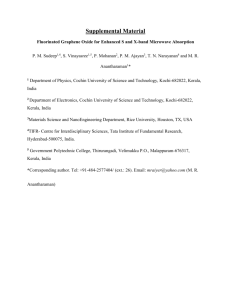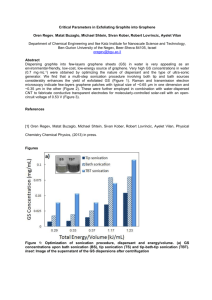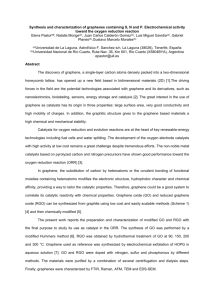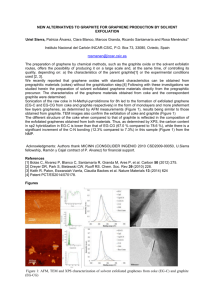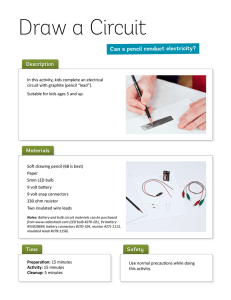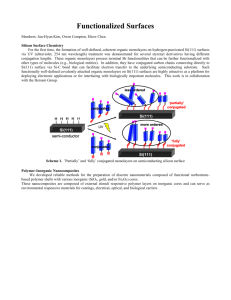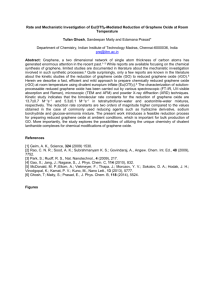Extending the molecular size in accurate quantum - IFF-CSIC
advertisement
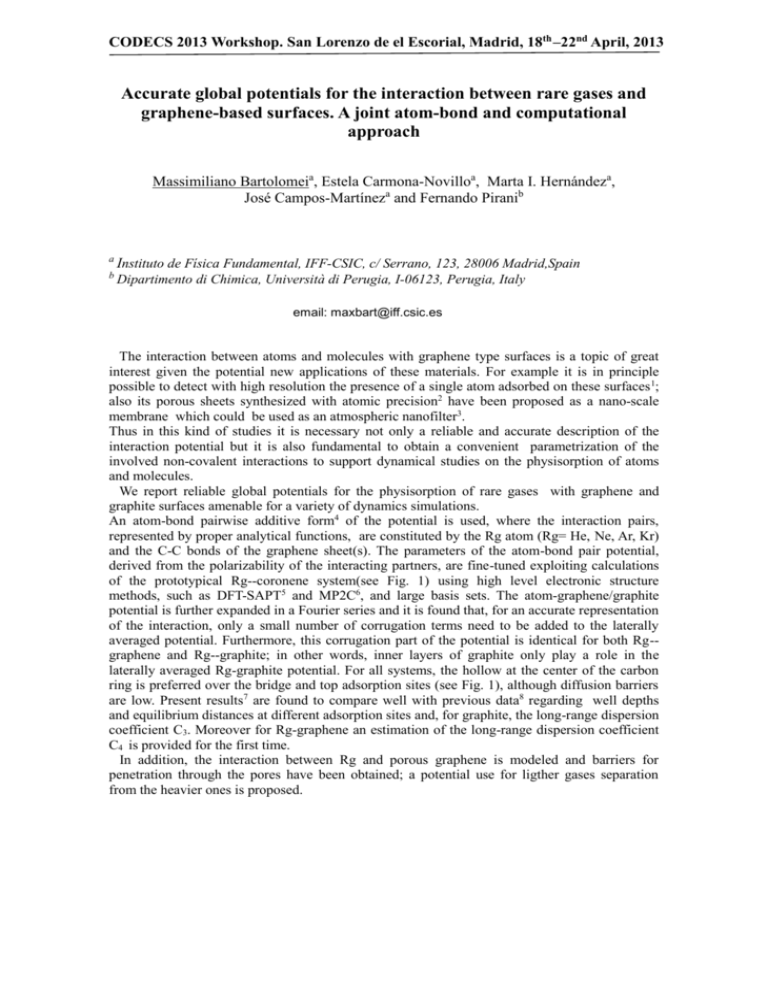
CODECS 2013 Workshop. San Lorenzo de el Escorial, Madrid, 18th –22nd April, 2013 Accurate global potentials for the interaction between rare gases and graphene-based surfaces. A joint atom-bond and computational approach Massimiliano Bartolomeia, Estela Carmona-Novilloa, Marta I. Hernándeza, José Campos-Martíneza and Fernando Piranib a Instituto de Física Fundamental, IFF-CSIC, c/ Serrano, 123, 28006 Madrid,Spain b Dipartimento di Chimica, Università di Perugia, I-06123, Perugia, Italy email: maxbart@iff.csic.es The interaction between atoms and molecules with graphene type surfaces is a topic of great interest given the potential new applications of these materials. For example it is in principle possible to detect with high resolution the presence of a single atom adsorbed on these surfaces 1; also its porous sheets synthesized with atomic precision2 have been proposed as a nano-scale membrane which could be used as an atmospheric nanofilter3. Thus in this kind of studies it is necessary not only a reliable and accurate description of the interaction potential but it is also fundamental to obtain a convenient parametrization of the involved non-covalent interactions to support dynamical studies on the physisorption of atoms and molecules. We report reliable global potentials for the physisorption of rare gases with graphene and graphite surfaces amenable for a variety of dynamics simulations. An atom-bond pairwise additive form4 of the potential is used, where the interaction pairs, represented by proper analytical functions, are constituted by the Rg atom (Rg= He, Ne, Ar, Kr) and the C-C bonds of the graphene sheet(s). The parameters of the atom-bond pair potential, derived from the polarizability of the interacting partners, are fine-tuned exploiting calculations of the prototypical Rg--coronene system(see Fig. 1) using high level electronic structure methods, such as DFT-SAPT5 and MP2C6, and large basis sets. The atom-graphene/graphite potential is further expanded in a Fourier series and it is found that, for an accurate representation of the interaction, only a small number of corrugation terms need to be added to the laterally averaged potential. Furthermore, this corrugation part of the potential is identical for both Rg-graphene and Rg--graphite; in other words, inner layers of graphite only play a role in the laterally averaged Rg-graphite potential. For all systems, the hollow at the center of the carbon ring is preferred over the bridge and top adsorption sites (see Fig. 1), although diffusion barriers are low. Present results7 are found to compare well with previous data8 regarding well depths and equilibrium distances at different adsorption sites and, for graphite, the long-range dispersion coefficient C3. Moreover for Rg-graphene an estimation of the long-range dispersion coefficient C4 is provided for the first time. In addition, the interaction between Rg and porous graphene is modeled and barriers for penetration through the pores have been obtained; a potential use for ligther gases separation from the heavier ones is proposed. CODECS 2013 Workshop. San Lorenzo de el Escorial, Madrid, 18th –22nd April, 2013 References 1 F. Schedin et al., Nat. Mater., 6, 652 (2007); M. Bieri et al., Chem. Comm., 45, 6919 (2009); 3 S. Blankenburg et al., Small., 6, 2266 (2010); 4 F. Pirani et al., Chem. Phys. Lett., 394, 37 (2004); 5 A. Hesselmann et al., J. Chem. Phys., 122, 014103 (2005); R.Podeszwa, K. Szalewicz, Chem. Phys. Lett., 412, 488 (2005); 6 M. Pitonak and A. Hesselmann, J. Chem. Theory Comput., 6, 168 (2010); 7 M. Bartolomei et al., J. Phys. Chem. C, submitted (2013); 8 G. Vidali et al., Surf. Sci. Rep., 12, 133 (1991). 2 Figures Figure 1. a) The prototypical rare gas--coronene complex. The hollow (H), top (T) and bridge (B) geometries correspond to three different perpendicular approaches of the rare gas atom on the coronene plane. b) Unit cell of graphene/graphite. Carbon atoms and C-C bonds at the outermost layer (graphene) are shown in dark green while those of the next layer (α-graphite) are given in light green.

